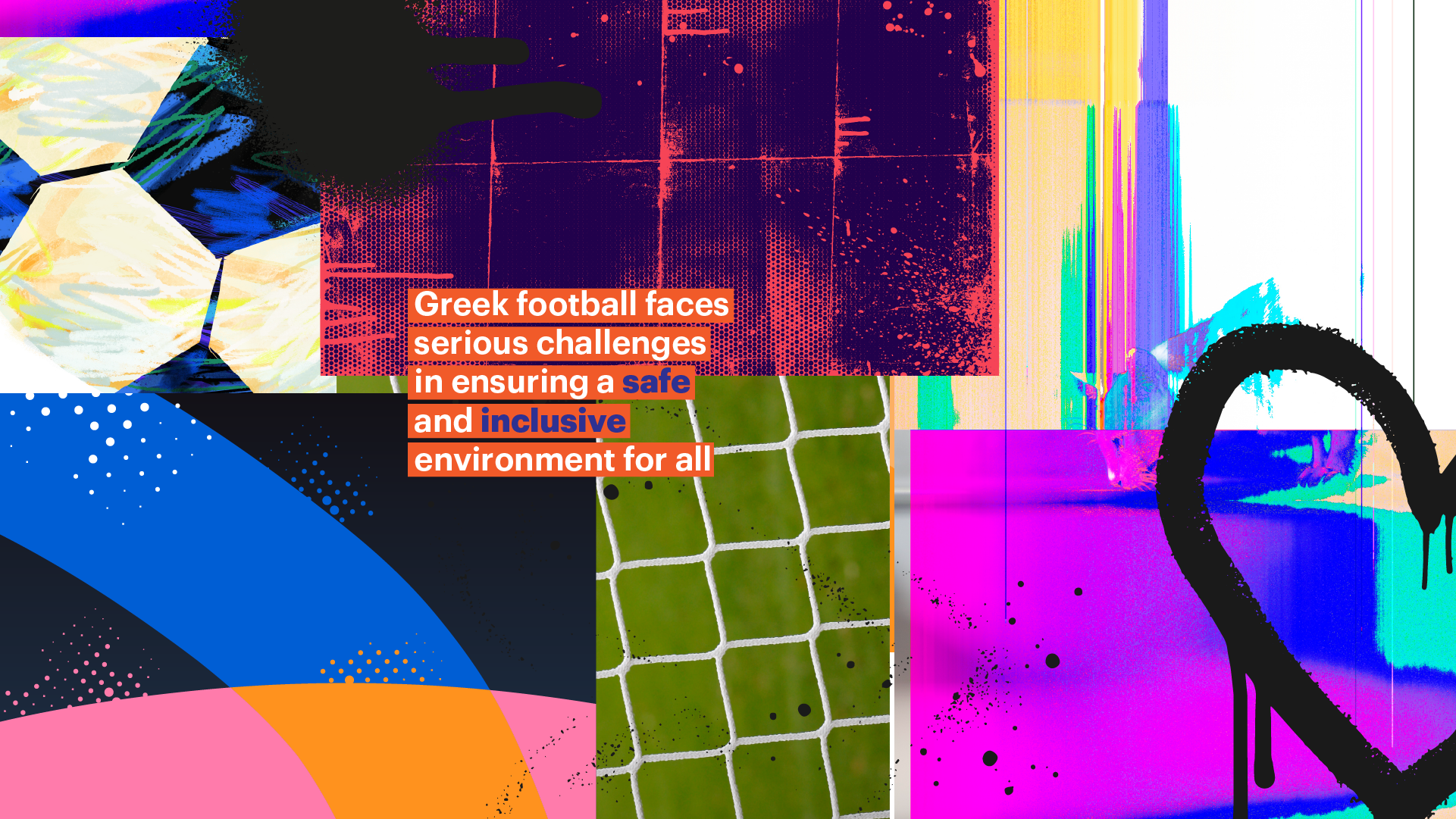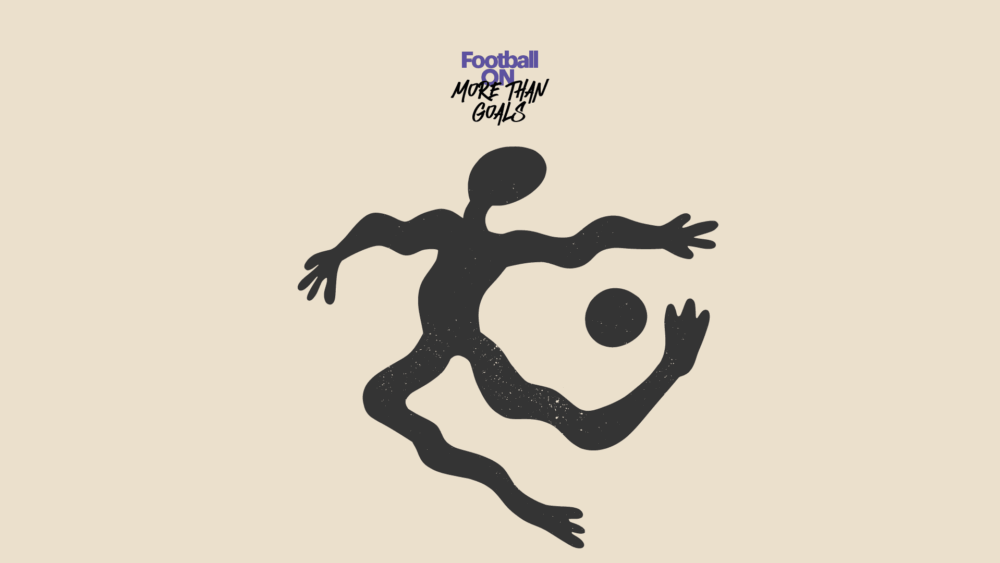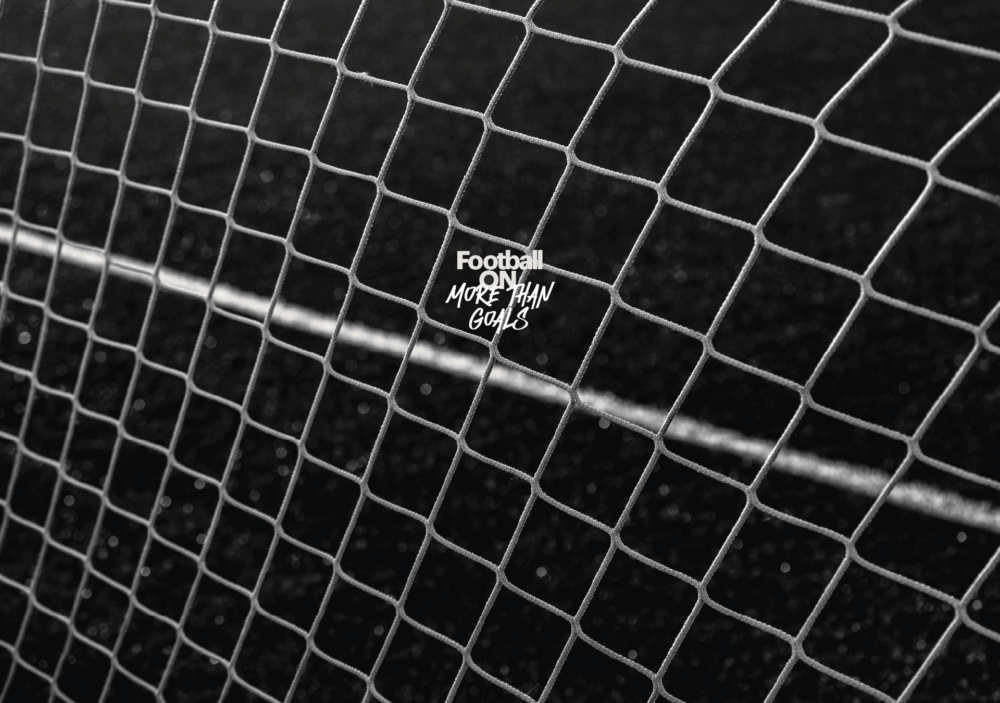
Panagiotis Panoutsos Talkowski: “Greek football faces serious challenges in ensuring a safe and inclusive environment for all”
Panagiotis Panoutsos Talkowski is a specialist in the field of Sports Integrity and founder/director of EAGLE Sports Integrity Services. He participates in the ETERON project FootballON: More Than Goals, talking about doping, the consequences for athletes, teams and the sport itself, the different forms of violence and abuse in football and the initiatives, at an institutional level, to support safe sport.
What is the relationship between football and doping?
Football, like all competitive sports, is directly related to doping, as the use of prohibited substances and methods can affect the physical performance of players, their health, and the integrity of the sport. FIFA and the national federations work closely with the World Anti-Doping Agency (WADA) to ensure clean competition through testing, education and strict penalties for offenders. Football players are subject to tests both in and out of matches, with international tests in UEFA competitions being carried out by the European federation itself, while domestic tests are carried out by the corresponding national authorities, such as EOKAN in Greece.
What do we define as doping? What and how many are the internationally recognized violations, as well as the relevant sanctions?
Doping is defined as the breaching of one or more anti-doping rule violations as defined in Article 2 of the WADA Code. Athletes or other relevant persons are required to know what constitutes an anti-doping rule violation, as well as the substances and methods included in the Prohibited List. The 11 violations defined by WADA include: the presence of a prohibited substance or metabolite in an athlete’s sample, the use or attempted use of a prohibited substance or method, evasion or refusal to submit to sample collection, tampering with the testing process, possession of prohibited substances or methods, trafficking or attempted trafficking of such substances, administering prohibited substances to an athlete, aiding or abetting violations, prohibited association with ineligible persons, as well as acts that discourage the reporting of violations or that seek retaliation against those who disclose such violations.
Sanctions for doping violations do not only concern athletes, but can also extend to other people involved in the sports environment, such as coaches, doctors, physiotherapists, teammates and club officials, if it is proven that they encouraged, facilitated or concealed cases of doping. At the same time, when two or more players on a team test positive for banned substances, the team can be punished with the removal of titles, heavy financial penalties or even exclusion from competitions, such as the Champions League and national championships.
Is there a notable example in recent years?
A notable example is the case of Paul Pogba, who tested positive for testosterone in August 2023, following a test conducted at a Juventus match. Testosterone is a substance that enhances muscle strength and endurance, which makes it prohibited by WADA. Pogba was provisionally suspended and faces the risk of a multi-year ban, which could spell the end of his career at the highest level.
The use of banned substances in football includes various categories of substances, such as anabolic steroids, stimulants (e.g. amphetamines, ephedrine, etc.), erythropoietin (EPO) which increases red blood cell production, diuretics and secretagogues, growth hormone (HGH), corticosteroids, beta-2 agonists, oxygenating agents and even more sophisticated methods, such as genetic and cellular doping. Some of these substances can enter the athletes’ bodies even unintentionally, through contaminated nutritional supplements. For this reason, football teams now send samples of the supplements used by their athletes for testing to specialized laboratories, in order to ensure that they do not contain banned substances.
In terms of testing in the sport, what is the current situation in Greece and on a global scale?
According to EOKAN data, football was the sport with the highest number of doping tests in Greece. At international level, during the 2023/24 season, 3,939 samples were collected in the framework of UEFA club and national competitions, of which 2,888 were in-competition tests and 1,055 were out-of-competition tests. The four men’s and women’s club competitions accounted for 1,809 tests, with the largest percentage taking place in the UEFA Champions League. At UEFA EURO 2024 in Germany, doping tests were carried out after each of the 51 matches, with at least four players per team being tested and the samples being analysed in a WADA-accredited laboratory. All samples were analysed within 48 hours of their collection and will be retained for ten years, allowing for future re-tests, should new detection techniques be developed. This means that retroactive sanctions can be imposed if banned substances are detected in a re-test.
UEFA, through the UEFA HatTrick programme, also funds training programmes in the fight against doping. All tests are carried out by UEFA’s Doping Control Officers (DCOs), a team of 56 doctors who undergo regular checks to ensure the quality of doping tests. New doping control officers undergo a comprehensive training programme, with seven of the ten new additions to the DCO team in the last two years being women.
What are the consequences of doping for an athlete, as well as the wider social and economic repercussions?
Doping in football has serious professional and social consequences, affecting not only the athlete’s career but also his reputation in the wider community. A footballer who tests positive for banned substances faces disciplinary, financial, legal and moral consequences that can ruin his career and irreparably damage his public image.
At a professional level, the first and most immediate consequence is exclusion from competitive activities. A footballer who tests positive in a doping test is punished with a temporary suspension and, if the violation is confirmed, may receive a suspension ranging from six months to four years, depending on the seriousness of the case and his history. In cases of recurrence, the suspension can be lifelong. During his suspension, the player cannot compete in official competitions, train with his team or participate in any football activity, resulting in him losing valuable playing time and being placed out of competition.
The loss of income is equally devastating for a footballer involved in a doping scandal. Most professional team contracts include clauses that allow the termination of the contract in the event of a violation of doping regulations. As a result, a footballer can suddenly find himself without a team and without a source of income. In addition, he loses performance bonuses, advertising revenue and sponsorship deals, as companies do not want to associate their name with an athlete with a tarnished reputation. The damage to his image in the general public has long-term consequences, as even if he returns to the playing field, the perception of fans, clubs and sponsors of him will never be the same.
In addition to the financial and competitive consequences, a footballer involved in a doping case may also face legal consequences. In many countries, the use or trafficking of prohibited substances in sport is considered a criminal offence and can lead to fines or even imprisonment, especially if it is proven that the athlete participated in an organized circuit or supplied others with prohibited substances. At the same time, teams can take legal action against him, claiming compensation for damage suffered due to his participation in illegal practices. Even if the athlete’s sentence is completed, the prospect of his professional rehabilitation remains extremely difficult. Most teams avoid signing contracts with players who have been tainted by doping cases, as they are considered a risk to both the team’s performance and its public image. If the athlete wants to continue his career as a coach or agent, his past may be an obstacle to his credibility and acceptance.
In addition to the professional consequences, doping in football has serious social consequences. Football is a sport with global appeal and football players are considered role models for millions of fans, especially children and young people who want to follow the same path. When an athlete is involved in a doping case, he loses social acceptance and the trust of the world. Fans feel betrayed and disapprove of the player, while public opinion is often relentless, leading him to social isolation. The influence of such incidents on young people is particularly worrying, as they send the message that success can be achieved through irregularities and unfair means, increasing the risk of doping spreading to younger age groups.
At the same time, every doping scandal at the highest level tarnishes the image of football as a sport. Fans begin to question the legitimacy of matches and the successes of players and teams, leading to a decline in their trust in the sport itself. This can affect its popularity, reduce ticket, television and sponsorship revenues, and drive away major investors who want to maintain a “clean” corporate image.
Doping also has serious psychological effects on the athlete. Public embarrassment, loss of career and isolation from football can lead to anxiety, depression and other mental disorders. Many athletes punished for doping find it difficult to cope with their fall from grace and in some cases resort to addictions or self-destructive behaviour.
Although football is one of the sports with the most doping tests, the percentage of positive samples is lower compared to other endurance and strength sports, which suggests that the problem is not as widespread as elsewhere. However, the need for continuous surveillance, strict controls and educational programs remains imperative, in order to preserve the integrity of the sport and avoid phenomena that could shake the public’s confidence in football. Prevention and education of athletes from an early age, strict enforcement of regulations and the promotion of a clean sports culture are the key tools that can ensure the future of football away from doping.
What forms of abuse do we observe in the football environment?
In the football environment, the forms of abuse that can affect athletes, coaches, fans and other stakeholders are varied and often not immediately noticeable. The need for a safe sports environment is imperative, as the effects of abuse are serious both at an individual and collective level.
- Physical Abuse: This includes actions that cause physical harm to athletes, such as excessive training without adequate rest, using violence as a means of discipline or ignoring injuries. Such practices can lead to serious injuries and long-term health problems.
- Psychological Abuse: Includes behaviors that undermine the self-esteem and mental health of athletes, such as humiliating comments, constant criticism, threats and intimidation. These practices can lead to anxiety, depression and withdrawal from the sport.
- Sexual Abuse and Harassment: This refers to unwanted sexual acts or advances towards athletes. A recent example is the case of former Spanish Football Federation president Luis Rubiales, who is accused of non-consensual kissing of footballer Jenny Hermoso during the 2023 Women’s World Cup award ceremony. The prosecutor has requested that he be convicted of sexual assault and coercion, proposing a prison sentence of two and a half years and a fine of 100,000 euros.
- Neglect: The failure to provide necessary care to athletes, such as ignoring medical needs, lacking adequate nutrition or failing to provide safe facilities. This form of abuse can have serious consequences for the health and performance of athletes.
- Financial Exploitation: Using an athlete’s image or assets without their consent or proper compensation. In football, this can include signing unfair contracts or exploiting young talent without fair pay.
- Discrimination: Treating athletes differently because of their gender, race, sexual orientation or disability. Examples include excluding women from managing men’s teams or making them inaccessible to people with disabilities.
Are all forms of violence visible? Or not?
It is important to recognise that many forms of abuse are not immediately visible. Psychological pressures, financial exploitation and discrimination may not be obvious, but they have profound effects on the well-being of athletes. Creating a safe and supportive environment in sport is essential to protect all participants and ensure the integrity of the sport.
Tell us a little more about integrity and safety in sport, but also about the abuse of athletes.
Safe sport is a pillar for the physical and mental health, well-being and integrity of all those involved. It also promotes the creation of an environment that fosters personal development, the enjoyment of participation and mutual respect. Key reasons for the importance of safe sport include protection from abuse, promoting equality and inclusion, and ensuring sustainability and ethics in sport.
It should be noted that abuse in sport affects the mental and physical health of athletes. Many abandon their careers, and young athletes are even more affected. A large study in Europe (Hartill et al., 2021) examined 10,302 athletes from six countries, including the United Kingdom, Austria, and Spain, showing alarming results:
75% had experienced at least one form of interpersonal violence before the age of 18.
65% reported psychological violence.
44% had experienced physical violence.
35% reported non-contact sexual violence.
20% had experienced contact sexual violence (Hartill et al., 2021).
These figures show the need for better safety measures in sports.
Let’s look at these reasons in more detail:
- Protecting Physical and Mental Health: Safe sport ensures that athletes are protected from physical abuse, injuries and psychological consequences, such as stress and depression. Maintaining their health is crucial for their well-being and long-term participation in sports activities (Mountjoy et al., 2016; Stirling & Kerr, 2013). Research shows that athletes in toxic environments have higher risks of mental health problems, such as eating disorders (Gulliver et al., 2012).
- Developing a Safe and Supportive Environment: A safe sports environment helps participants to develop without fear of abuse or exploitation. A supportive and protective framework enhances self-confidence and cultivates a sense of “belonging” (Battaglia et al., 2024).
- Preventing Abuse and Harassment: Implementing safety policies in sport helps prevent behaviors such as physical, psychological, or sexual abuse and harassment. These policies protect vulnerable participants, especially children and young athletes, by creating an environment that promotes safety and well-being (Parent & Fortier, 2018; Alexander et al., 2011). A review of protection practices in young athletes showed that education and clear reporting mechanisms reduce incidents of abuse (Battaglia et al., 2024).
- “Fair Play” in Practice: Without safe sport, the principles of “fair play” are not implemented, as fairness and respect are challenged. Safe sport is essential for fair competition with rules that are respected and participants with ethical values. The lack of a safe environment undermines the trust of athletes and society in sport (UNESCO 2024; IOC, 2024).
- Inclusion of Vulnerable Groups: A safe sports environment is equal and accessible to all, regardless of age, gender, socio-economic status or physical ability. Such an environment facilitates inclusive participation and promotes acceptance and respect (United Nations Department of Economic and Social Affairs). Inclusion programmes in sport also help to build community cohesion and reduce social isolation (Hoye et al., 2012).
- Strengthening Resilience and Self-Esteem: Safe sport strengthens the resilience and self-esteem of athletes by providing them with a supportive environment. Positive relationships with fellow athletes and coaches strengthen the ability to manage challenges in sport and life (Stirling & Kerr, 2013; Thelwell et al., 2008).
- Strengthening Trust and Sponsor Support: A safe environment builds public trust and attracts sponsorship. When safety rules are followed, organizations increase their credibility and reputation, both locally and internationally. Sponsors associate their support with safe environments, which opens up opportunities for collaboration (Mountjoy et al., 2016; Schinke et al., 2023).
- Reducing Financial Risks for Organizations: Implementing safe sport policies reduces financial risks for teams and federations, preventing legal disputes and loss of sponsorships. Studies show that investing in security measures reduces the likelihood of financial problems (IOC, 2024; Dugalić, 2011).
Especially for football now, what issues does the sport face?
Safety in sports is a fundamental principle for ensuring a healthy and supportive environment for all involved. In Greece, football faces significant challenges in terms of safety, including psychological violence, discrimination, inadequate sports facilities, lack of equal opportunities and insufficient institutional protection for athletes and other participants.
In summary, we have the following issues:
- Psychological Violence and Toxic Environments: One of the most widespread problems in Greek football is the psychological pressure that athletes are subjected to, both by the coaching staff and by their teammates. Outdated coaching methods, which often include degrading practices and extreme forms of discipline, continue to be applied, creating a toxic environment. Psychological violence, manifested through derogatory comments, constant pressure to perform and humiliating practices, can have serious consequences for the mental health of athletes, leading to stress, low self-esteem and, in many cases, abandonment of sports.
- Sexism and Discrimination in the Sports Environment: Cases of sexism remain intense in Greek football, affecting female athletes, coaches and administrators. Women continue to face prejudice and limited opportunities in leadership roles, while women’s football teams do not have the same visibility and support as men’s. Women’s football in Greece has not secured the required equality in terms of funding, television coverage and sports infrastructure, which limits its development and prevents the participation of more women.
- Lack of Safe Sports Facilities: A long-standing problem in Greek sports concerns inadequate and often dangerous sports facilities. In many cases, stadiums and training facilities do not meet safety standards, putting athletes at increased risk of injury. The inability to maintain and modernize sports infrastructure creates additional obstacles to the development of a safe sports environment.
- Discrimination against the LGBTQI+ Community in Sports: Athletes and officials belonging to the LGBTQI+ community face particular difficulties in the field of Greek football. The fear of rejection, targeting and discrimination prevents many from openly expressing their identity. The lack of clear policies of inclusion and protection makes the football environment inhospitable for the LGBTQI+ community, thus limiting the possibility of equal participation.
- Cases of Sexual Harassment: Sexual harassment in Greek sports came to the fore especially after the revelations of Olympic champion Sofia Bekatorou. Although her case gave impetus to the Greek #MeToo, the institutional changes that followed were not sufficiently utilized by the competent bodies to create a comprehensive protection and prevention mechanism.
What is the institutional framework connecting all the above critical issues?
While in most Western countries there have been clear regulations and safeguarding mechanisms for at least 15 years, in Greece the institutional approach to the issue is still in progress. The General Secretariat of Sports submitted and was voted by the Parliament a legislative provision for the creation of the institution of the “Safety and Welfare Officer”. His role will be to manage issues related to the prevention and treatment of physical, psychological and sexual abuse in sports federations. The memorandums of cooperation of the General Secretariat of Sports for Safe Sports with the Democritus University of Thrace and the Institute of Child Health are also in a positive direction. In addition, the General Secretariat of Sports supervises the Standing Committee for Combating Violence (D.E.A.B.), which is responsible for combating violence in sports.
With regards to the Hellenic Football Federation (E.P.O.) and the Superleague? What is your input?
The Hellenic Football Federation (E.P.O.) has developed procedures for the implementation of safe sports, such as a child protection policy, and has a responsible person. At the same time, the Superleague, within the framework of the licensing procedures of the clubs, requests the conduct of educational activities to promote safe sports by its teams.
A typical example is the educational program of EAGLE Sports Integrity Services, which is implemented for AEK FC. This program focuses on the education of athletes, parents, coaches, administrators and support staff of the Academies and the team network on issues of safety and protection in sports.
Greek football faces serious challenges in ensuring a safe and inclusive environment for all involved. Psychological violence, discrimination, inadequate facilities, gender inequality and the failure to institutionally address sexual harassment are critical issues that require immediate action. Although significant steps have been taken towards adopting an institutional safeguarding framework, Greece still lags behind international practices. Strengthening education, adopting strict protection policies and cooperation between institutions are essential elements for shaping a sporting environment that will promote integrity, safety and equal participation for all.
Bibliographic sources:
Scientific journals and books
- International Olympic Committee (IOC). (2024a). IOC Safeguarding Guidelines for IFs and NOCs. Retrieved December 20, 2024, from https://olympics.com/athlete365/articles/safesport/ioc-safeguarding-guidelines-for-ifs-and-nocs
- Mountjoy, M., Brackenridge, C., Arrington, M., Blauwet, C., Carska-Sheppard, A., Fasting, K., & Budgett, R. (2016). International Olympic Committee Consensus statement: Harassment and abuse (non-accidental violence) in sport. British Journal of Sports Medicine, 50(17), 1019–1029. https://doi.org/10.1136/bjsports-2016-096121
- Nicholls, A. R. (2022). Psychology in sports coaching: Theory and practice. London: Routledge. Retrieved December 20, 2024, from https://www.taylorfrancis.com/books/mono/10.4324/9781003201441/psychology-sports-coaching-adam-nicholls
- Parent, S., & Fortier, K. (2018). A comprehensive overview of the problem of violence against athletes in sport. Journal of Sport and Social Issues, 42(4), 227–246. https://doi.org/10.1177/0193723518759448
- Parker, A., & Morgan, H. (2023). Sport, Physical Activity and Criminal Justice: Politics, Policy and Practice. Routledge. Retrieved December 20, 2024, from https://www.routledge.com/Sport-Physical-Activity-and-Criminal-Justice-Politics-Policy-and-Practice/Morgan-Parker/p/book/9781032075846
- Pielke, R. A. (2016). The Edge: The war against cheating and corruption in the cutthroat world of elite sports. Berkeley, CA: Roaring Forties Press.
- Reardon, C. L., Hainline, B., Aron, C. M., Baron, D., Baum, A. L., Bindra, A., & Engebretsen, L. (2019). Mental health in elite athletes: International Olympic Committee Consensus statement (2019). British Journal of Sports Medicine, 53(11), 667–699. https://doi.org/10.1136/bjsports-2019-100715
- Rosa, B. A. (2015). Ethics in Sport – Guidelines for Coaches (Version 1). Luso-Illyrian Institute for Human Development (iLIDH). Retrieved December 20, 2024, from https://pned.ipdj.gov.pt/documents/61051/77314/Ethics-in-Sport-Guidelines-for-Coaches.pdf/63446ed3-feb4-5265-a88a-21385d9fdf9a?t=1615999116226
- Schinke, R., Wylleman, P., Henriksen, K., Si, G., Wagstaff, C. R., Zhang, L., & Li, Y. (2023). International Society of Sport Psychology Position Stand: Scientist practitioners. International Journal of Sport and Exercise Psychology, 22(1), 1–23. https://doi.org/10.1080/1612197x.2023.2174681
Research, Internet Sources and Other Sources
- BBC News. (2024). LGBTQ+ discrimination in football: Persistent challenges in sport. BBC News. Retrieved December 20, 2024, from https://www.bbc.com/news/articles/c75zvlrr9ryo
- European Football Federation (UEFA). (2024). Anti-doping and integrity measures in European football. Retrieved December 20, 2024, from https://www.uefa.com/running-competitions/integrity/anti-doping/
- Federation Internationale de Football Association (FIFA). (2024). FIFA’s anti-doping regulations. Retrieved December 20, 2024, from https://inside.fifa.com/legal/anti-doping
- International Olympic Committee (IOC). (2024b). The IOC Consensus Statement on Harassment and Abuse (Non-Accidental Violence) in Sport. Retrieved December 20, 2024, from https://www.researchgate.net/publication/301668636_The_IOC_Consensus_Statement_Harassment_and_abuse_non-accidental_violence_in_sport
- Ministry of Sports (Greece). (2024). Athletic law and governance reforms in Greek sports. Retrieved December 20, 2024, from https://minsports.gov.gr/me-evrytati-synainesi-tis-voulis-yperpsifistike-kai-o-3os-athlitikos-nomos-tou-gianni-vroutsi/
- Stonewall. (2024). New research shows many LGBTQ+ people still don’t feel welcome in sport as Rainbow Laces campaign kicks off. Retrieved December 20, 2024, from https://www.stonewall.org.uk/news/new-research-shows-many-lgbtq-people-still-dont-feel-welcome-in-sport-as-rainbow-laces-kicks-off
- World Anti-Doping Agency (WADA). (2024). World Anti-Doping Code and International Standards.Retrieved December 20, 2024, from https://www.wada-ama.org/en/resources/world-anti-doping-code-and-international-standards
- World Anti-Doping Agency (WADA). (2024). Annual reports and anti-doping regulations in Greece. Retrieved December 20, 2024, from https://www.eokan.gr/annualreports




